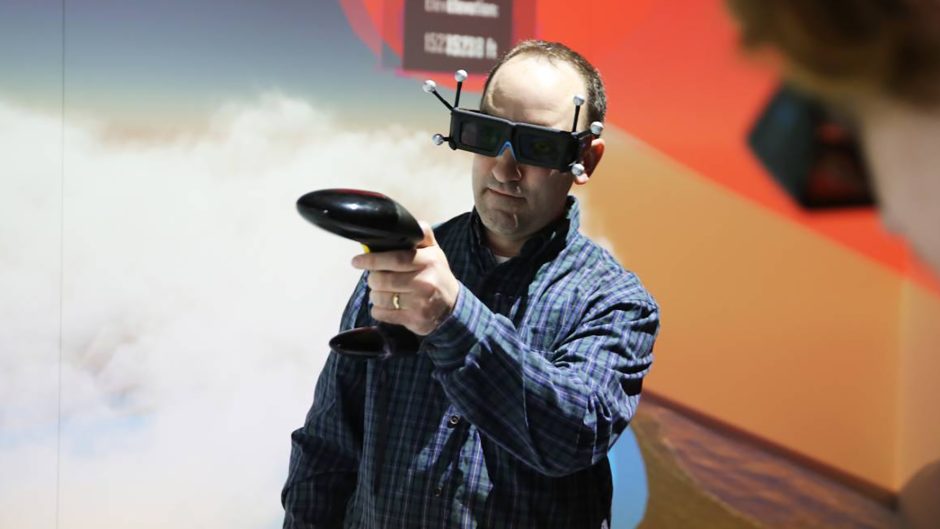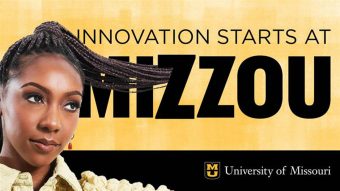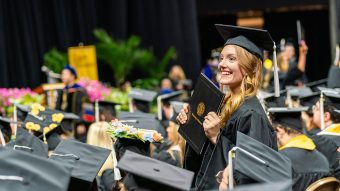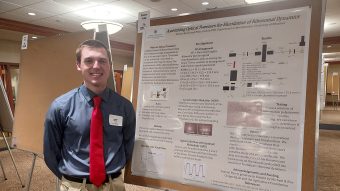
April 27, 2023
University of Missouri faculty members from the Collage of Agriculture, Food and Natural Resources, the College of Education and Human Development, and the College of Engineering are combining their expertise in meteorology, virtual reality, augmented reality and mixed-reality-based learning environments to help students gain a deeper understanding of mid-latitude cyclones — complicated systems that drive most of the stormy weather in the United States.
Thanks to Eric Aldrich, Fang Wang and Xinhao Xu, students in Synoptic Meteorology II were recently able to step inside a 3D virtual reality model to see how air moves within mid-latitude cyclones. The immersive experience, offered through the MU College of Engineering’s CAVE facility, allowed students to visualize how the system forms and eventually slows.
The idea came to Aldrich last year when he was explaining mid-latitude cyclones in the class and noticed students were having a difficult time understanding the material.
“I had to go over the process three to four times because it’s a very tough concept to grasp,” Aldrich said. “I was looking for a way to better explain the 3D motions within the system. You can’t just jump into a cloud or see the wind, but that’s the type of modeling I needed to showcase.”
Aldrich served as the content expert on the project. Wang and her team were charged with the programming and development of the virtual reality system. Xu and his students were tasked with planning and designing the instructional elements of the project, such as how to sequence the materials, how to provide visual and textual aids, and when and where to add environmental sounds.
“It is one of the most satisfying parts of the project to see students get exposed to new technology and new methods of teaching and learning,” Wang said. “It was great to see them using the new programs we developed and their high engagement level during the sessions.”
Before testing the program, Aldrich gave students a lecture focused on mid-latitude cyclones. When they arrived to try out the program, they took a pre-test about their previous virtual reality experience. Xu and his students provided another test for the environmental sciences students and also conducted interviews with them afterwards.
“We want to collect as much data as possible,” Xu said. “Our philosophy with research is to offer practical solutions to solve real-world problems. With content like this, it’s the perfect opportunity to do just that. You can’t fly into a cloud to study it – but you can with this technology.”
Xu created post-test questions designed to see if students were more confident in their understanding of the material after using the program.
“We’re not trying to replace anything — I love classroom teaching,” Xu said. “We’re just researching these complementary pieces to see if we can add anything to the learning experience. We have the technology, so let’s use it to help students learn and offer them different perspectives.”
Several students who participated in the experience were impressed with the program, showcasing promising early results that the aid was valuable.
“Weather is very 3D, so the ability to maneuver around a system was incredible,” said Drew Smith, a junior environmental sciences student. “I felt like it really enhanced what we had already learned about mid-latitude cyclones. I’m a visual learner, so it was nice to be part of this and I’m excited to see where this goes.”
Read more from the College of Agriculture, Food and Natural Resources


